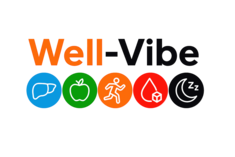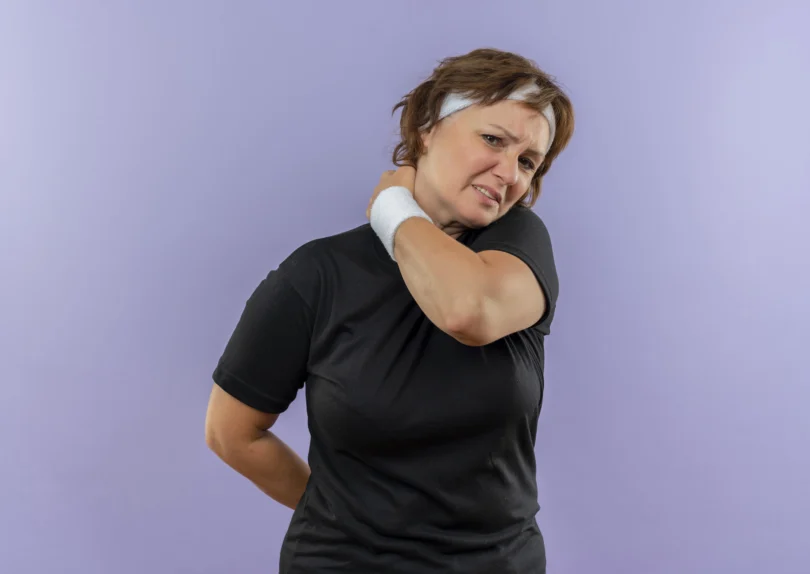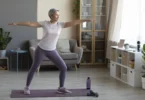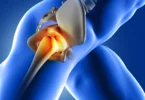When your alarm clock gently wakes you. And instead of jumping out of bed like you used to when you were younger, your joints feel like they were placed in a vice overnight. If you’re over 50, you are likely very familiar with this daily experience of Joint Stiffness.
Joint Stiffness now affects more than 80% of adults over 50, anywhere from mildly annoying to a drastic change in your quality of life after previously working hard to attain one. As it goes, the joints you have been using for years of living, working, sports, hobbies and life’s pleasures are sending a different message. The good news is; knowing why it’s happening and what to do about it will help you regain the active life, once again, in your Golden Years.
Joint Stiffness As The Natural Progression of Your Body’s
To put joint stiffness in perspective, Joint Stiffness after 50 recognizes the natural progression of moving machinery. Small changes to your mobility system can translate to a lot of added health, joy, and fun. Think of funeral rites; at-risk years of your ages ago, probably long-since recovered. That familiar feeling of limited movement, discomfort, or “tightness” isn’t just part of “getting older”; it’s about realizing how decades of use have affected your joints.
For five decades or more, your joints have been your loyal servants. They have carted you around to childhood adventures, active sports, demanding jobs, and the innumerable other activities of life. Now, like any well-used machine, they require more time and attention to function optimally.
The difference between normal age-related changes and problematic joint pain comes down to understanding what’s normal and what you may need to seek help for. For example, we should expect a bit of morning stiffness as we age. However, chronic inflammation, painful limitation or pain during your desired activities should not just be dismissed as “just getting older”.
After age 50, the cartilage in your joints naturally becomes thinner and loses elasticity, the fluid in the joints diminishes, and the ligaments that hold the joint together may stiffen. This can be a normal life experience, but it does not have to define your limitations.
Neck Stiffness
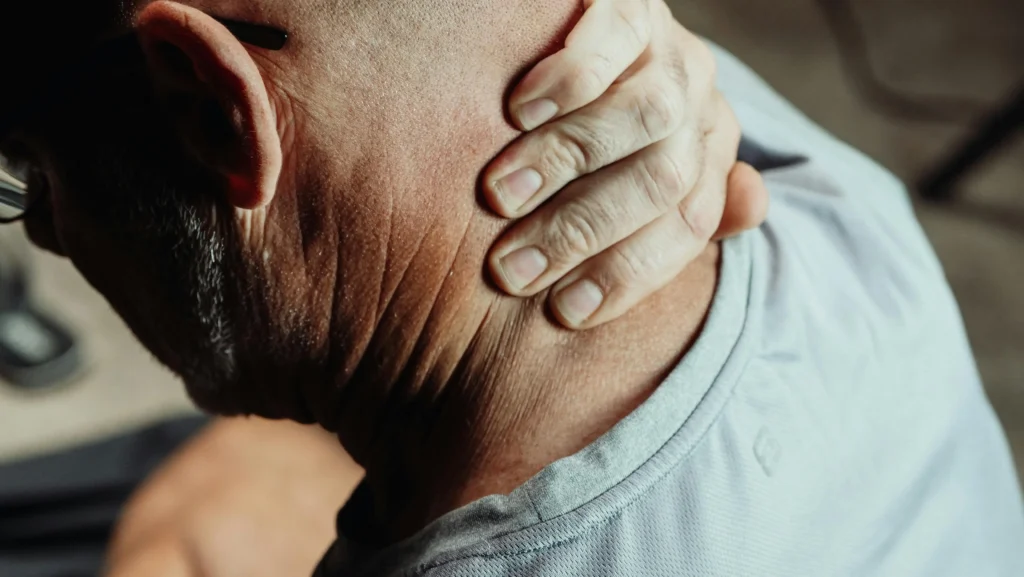
Neck Stiffness is the new problem for maturing Adults. Like one of my friends, Robert, a 62-year-old retired engineer, who discovered that Neck Stiffness was not a welcome guest in his morning activities. “I spent 35 years at a drafting table and from a computer, but I thought in my retirement, I could say goodbye to the stiffness,” he said. “Actually, it seemed to get worse.”
Neck Stiffness is particularly challenging to navigate after 50 for a few interconnected causes:
- Decades of postural habits in your working life finally affect you.
- Age-related changes in your cervical spine discs & facet joints.
- Age-related decrease in muscle mass and muscle strength in the muscles supporting your neck.
- Age-related, hurdles from sleep position as comfort needs change as we get older.
The neck is a complex structure of 7 vertebrae and is surrounded and supported by bones, muscles, ligaments and nerves – all of which, over the years, have built up patterns of use. Years of using a computer and looking down, years of utilizing certain positions while sleeping, and years of carrying stress in your shoulders all contribute to the stiffness that many people experience as they get older.
Younger adults may recover quickly from a “crick in the neck” but those over 50 may find that neck stiffness lasts longer and requires more deliberate interventions to manage. The good news? You might find that your neck stiffness can be helped with simple things like gentle stretching first thing in the morning, using an ergonomic pillow and heat therapy.
When to see a doctor? Significant and severe symptoms such as pain radiating down into your arms, chronic headaches, numbness & tingling in your hands, and stiffness that does not abate with gentle movements throughout the day.
Joint Inflammation
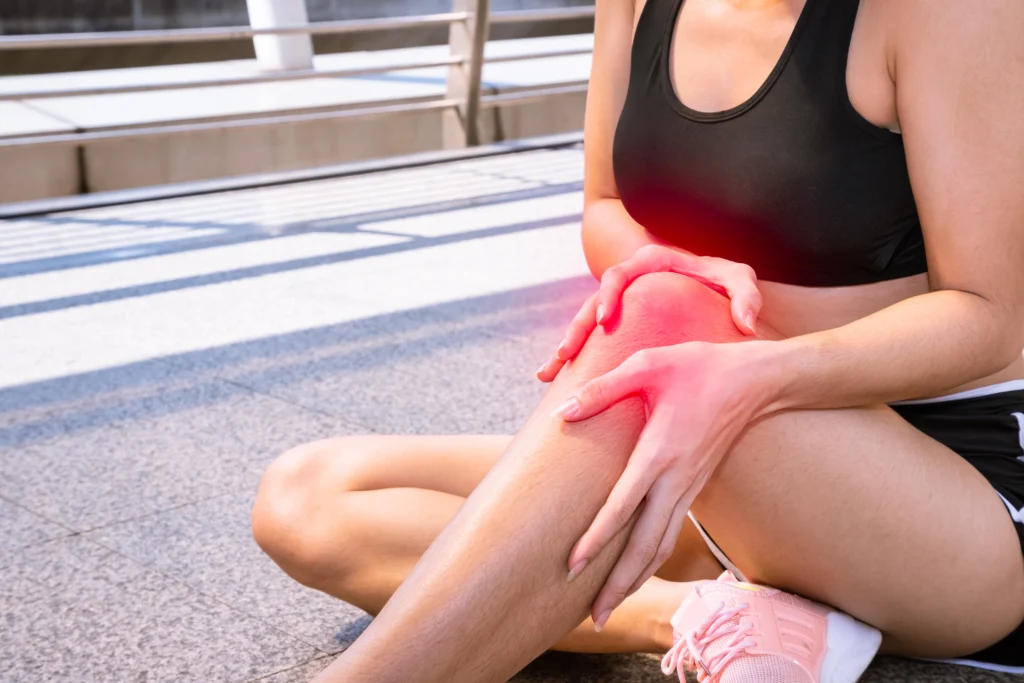
At 50+, inflammation takes on new meaning for your health journey. Your body’s natural response mechanism – inflammation – is more complex as your immune system becomes exponentially more seasoned after decades of dealing with various life challenges. Key concepts regarding chronic joint inflammation in older adults stem from age-related elements associated with the unique life stage of older adulthood. Classic morning stiffness is often associated with rheumatoid arthritis (RA) while the science behind morning stiffness is poorly understood (National Center for Biotechnology Information). Age-related changes in immune response are known to be important in the development of RA.
For persons over 50, several forms of inflammation are more prominent, including:
- Osteoarthritis (more than 50% of older adults over age 65)
- Rheumatoid arthritis (popularly considered to have an onset peak between the ages of 40-60)
- Polymyalgia rheumatica (particularly affects adults over] 50)
- Gout (very common in postmenopausal women and older men)
- Pseudogout (calcium crystal arthritis in older adults)
The addition of weight from the body creates additional forces on the joints. Additionally, fat tissue can secrete proteins into the body that can signal inflammation, just as noted in an article from Medical News Today. This should ring especially true for older adults, where metabolic dysregulation can create problems with regulating weight.
Changes in hormones during the aging process that decrease estrogen production, for example, after menopause, predict higher levels of joint inflammation throughout the body. Making a connection between inflammation and morning stiffness in older adults can assist in the understanding of why symptoms often worsen after adult life transitions.
Causes Of Joint Stiffness
“I used to jump out of bed ready to conquer the day,”. “Now it takes a good 20 minutes, and I have to take a hot shower before I feel human again.” This thought process resonates with a multitude of 50+ aged adults who have made the transition to the next life stage.
While rarely referenced in the literature, morning joint stiffness can become more pronounced after the age of 50 due to several new aging related factors:
- Decreased circulation from a resting state affects the lubrication in the joints
- Less naturally produced anti-inflammatory hormones are available after sleep
- Age-related changes in sleeping patterns hinder recovery
- Longer to clear accumulated inflammatory proteins
Morning stiffness (MS) qualitatively characterizes RA. In the clinical setting, MS associates with markers of systemic and local inflammation exhibited by RA patients within the PMC database. From my clinical perspective, the results generated from these studies are particularly noteworthy for older adults, as risk of inflammatory arthritis increases with age.
Old information about the characteristics of morning stiffness (duration and severity often provide supportive diagnostic information). Morning stiffness represents a symptom of many types of arthritis, including osteoarthritis (OA), which is the more common type of arthritis as one ages, reported by WebMD Those adults over 50 are encouraged to notice these patterns:
- Stiffness lasting less than 30 minutes may indicate osteoarthritis
- Stiffness lasting hours suggests an inflammatory arthritis
- Stiffness with swelling requires medical assessment
The important principle for older adults is not to adopt severe morning stiffness as their new normal, but to realize it is an indicator that purposeful acts of intervention can support their mobility, and independence.
Common Reasons
To understand the reasons that create Joint Stiffness after 50 you need to start with unique factors that affect mature adults. Your joints have stories to tell about the lifetime of experience of activities, injuries, abilities, jobs, and lifestyle that have brought you to where you find yourself today.
Age-related primary reasons:
- Osteoarthritis due to decades of cartilage in joints, and the stresses of long-time usage
- Changes in hormones from medications or natural decline of estrogen/ testosterone which may affect inflammation or tissue integrity
- Reduced bone density that could affect stability of your joints
- Reduced muscle mass (sarcopenia) with ageing that will affect the supports for your joints
Accumulation of lifestyle effects:
- The cumulative effect of your career related repetitive stress patterns
- Sports-related injuries from your earlier decades now showing as issues.
- Changes in body weight that impact your load bearing joints differently over time.
- Side effects of prescribed drugs to treat unrelated and age-related conditions
Gender related issues:
- Increased inflammation biggest issue for women with joint problems is higher after menopause with the loss of estrogen
- Impact of change in testosterone affecting how men’s body changes body composition, joint health etc.
- Gender behaviours – there may be specific patterns in the types of arthritis (women are typically have RA more than men, while men have gout more than women)
Chronic Health Conditions:
- Development of chronic auto-immune diseases that tend to emerge after 50 or escalate from your 50+ years of life and stressors being made worse
- Thyroid (hypo or hyper) and how your metabolism relates to joint health
- The impact of your cardiovascular medications has on your joint symptoms and health
- The number of other chronic age-related health conditions possibly inciting inflammatory cascades aka health issues
Hip Joints As Reserve Bearers:
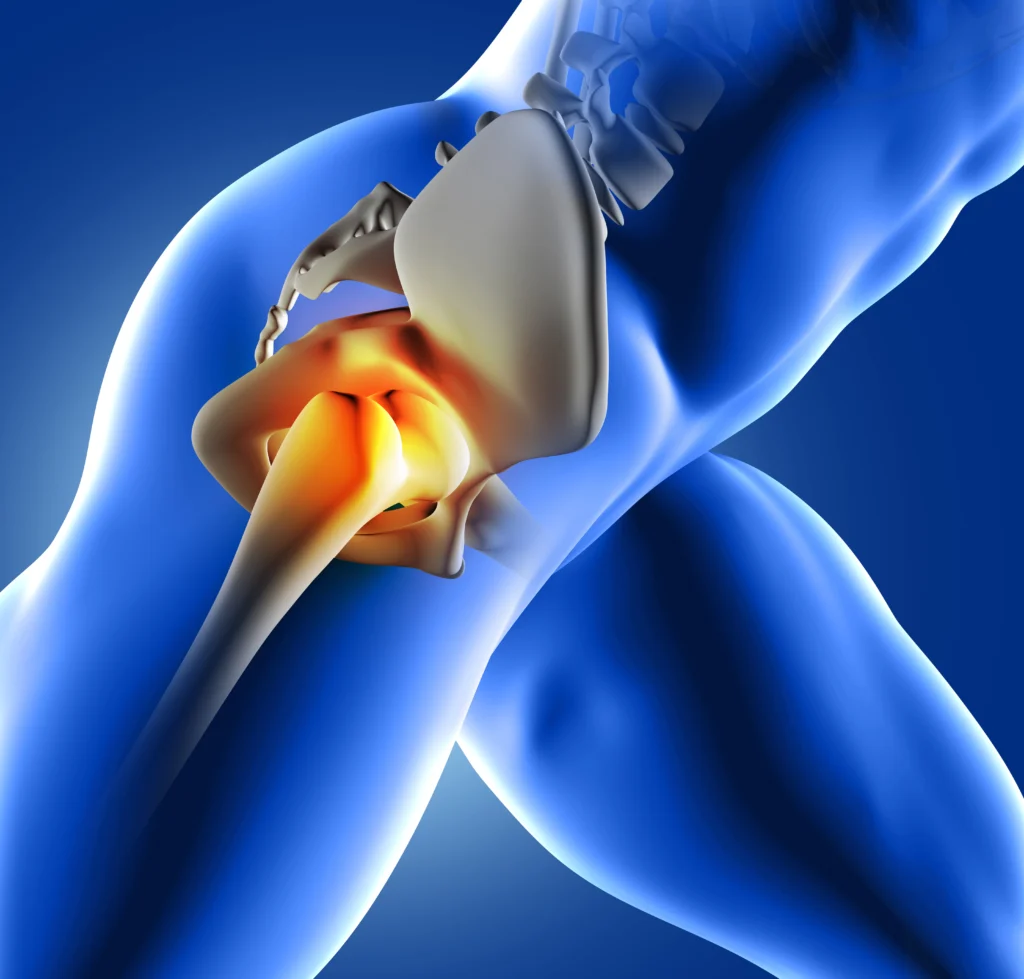
It’s a complicated process for our hip joints, and they are especially vulnerable due to the nature of being a weight-bearing joint. Using our bodies to walk, climb staircases for activity and sustain a person’s body weight on the hip seems to have a cumulative effect over time. For many, hip stiffness becomes a hallmark complaint for those in their mature adult phase. Less frequent but significant factors are: bone infections, some cancers that begin to become common after 50, and changes to medications or interaction of medications, which become more likely when you have a longer list of prescriptions.
The 4 Practical Relief Steps
1- Seniors Mobility Exercises
Examples of a Morning Mobility Routine:
- A couple of gentle stretches in bed before getting up.
- A warm shower or heating pad provides some relief from morning joint stiffness.
- Recognize you may have to allow a little time to allow your joints to “warm-up” before you are able to return to relatively vigorous activity.
- Consider a light morning yoga, or taichi, program for older adults.
Exercise For 50+:
- Emphasizing lower-impact exercises to protect aging joints.
- Swimming is an excellent exercise that still provides great movement without stress on the joints.
- Walking is still one of the best options for overall joint health.
- Strength training should be stressed more and more in order to maintain muscle mass and help support joints.
Smart Changes to an Exercise Routine:
- Longer warm-ups to prepare the joints for activity.
- Smaller, more frequent bouts of exercise as opposed to longer marathon bouts.
- Adding flexibility and balance to help combat falls.
Just listening to your body and letting how your joints feel determine the intensity of your activity
2- Nutrition for Joint Health:
- Concentrating on healthy meals that contain anti-inflammatory foods.
- Not forgetting to include omega 3 fatty acids which can come from fish, walnuts and flaxseed.
- Considering calcium & vitamin D intake for overall bone health.
- Thinking about incorporating a Mediterranean style of eating that is known to help combat inflammation.
3- Medical Management:
- Regular follow-ups to monitor your joints, assess health, and adjust treatment.
- Discuss with your health care providers what suitable options are to address pain.
- Thinking about trying physical therapy in order to manage specific issues in your joints.
- Make sure you are catching up on your vaccines because infections can bring on flares related to your joints.
One last reminder, at 50+, consistency and patience are much more important than intensity. Your body is not reacting the same as if you were 30, but when given the right strategies, it can respond unfathomably well at any age.
4- Supplementation Support
When you reach the age of 50, your nutritional needs change dramatically from those of your previous needs. Old needs will change, and supplements can change as well; they will become very specific or even individualised when dealing with joint inflammation and general joint health.
Specific Supplements For 50 Plus:
- Vitamin D3: is important for bone health and immune function; vitamin D is produced less in your skin as you age, making it more important.
- Omega-3 fatty acids (EPA and DHA): very good for inflammatory markers and heart health
- Calcium & Magnesium: support bone density and muscle function
- Vitamin B12: Common deficiency in older adults; very important for nerve health
Joint-centric Supplements:
- Glucosamine & Chondroitin: May help support cartilage, mainly osteoarthritis
- Curcumin with BioPerine: Curcumin provides better absorption of turmeric extract for anti-inflammatory case support
- Collagen peptides may help provide support for joint cartilage; skin health
- MSM (methylsulfonylmethane): it is an organic sulfur compound; may help in reduction of joint discomfort
- Also, consider the following supplements:
- Coenzyme Q10: to support cellular energy production (which begins to decline in mid-life)
- Boswellia extract; this is traditional herb origin which is now being studied with modern science that supports joint discomfort
- Hyaluronic acid; potential support for joint lubrication
Make sure to speak to your health professional when considering supplements, especially after 50, as interactions with medications could present a greater risk. Your doctor can advise with respect to potential interactions with heart medications, blood thinners, or other common prescriptions in this demographic age group.
When To Seek Professional Help
At 50+, you probably are wise enough to trust your instincts about your body and don’t let anyone, including well-meaning friends or family, tell you to ignore your concerns as “normal ageing.” And you deserve to be able to live a life of health, activity, and comfort.
Red flags-&-Triggers of concern that need immediate medical intervention:
- New, sudden, severe joint pain which restricts normal activities
- Pain/swelling/redness/warmth in joints, especially if fever is present
- Stiffness in the joint that persists an abnormally long time, despite performing a few hours of movement
- Complete loss of strength in either arm or leg
- Drastic changes in your ability to perform the functional tasks of daily living
When to plan on regular consultations:
- Annual screening of joint health for preventative care
- A change in the amount of time it takes you to feel your normal morning stiffness improving
- Difficulty keeping to the activity level that is personally meaningful
- Any questions you might have about what exercises are safe for you, or whether to modify your activities
- Concerns about possible side effects or interactions with your medications
When to consider visiting a specialist:
- A rheumatologist to confirm inflammatory arthritis
- An orthopedist for structural problems; or for injury-related occupation and associated problems
- A physical therapist to assess your movement limitations and provide a treatment plan for exercises for you to continue with
- A pain management specialist when pain is causing you a decline in quality of life
Early intervention is critically important after 50 because you have an apparent change in the ability to heal and the compensation to avoid ability decline and for being able to live independently for many more years is just so important.
Our Recommendations for Joint Stiffness Relief
- Voltaren Gel (Diclofenac) – A prescription-strength topical, NSAID that is supposed to be better on the stomach than taking orally.
- Bengay Ultra Strength Cream – A tried and indeed true formulation containing menthol and camphor that has been studied for generation upon generation.
- Aspercreme Lidocaine Cream – The maximum strength topical pain relief formulation that is a surface anesthetic but concerns of pain treatment orally.
- Capsaicin Cream (Zostrix) – A natural pain blocker for chronic arthritis pain which is prevalent in over-50s.
- Nordic Naturals Omega-3 – A high quality fish oil specifically designed to be taken by older adults.
- Move Free Advanced – A joint supplement with all of the ingredients in included with glucosamine, chondroitin, and hyaluronic acid.
- Turmeric Curcumin with BioPerine – A well-know anti-inflammatory product that improves absorption with later-in-life digestion.
- Soul CBD Rapid Relief Cream – A natural topical formulation that is found to be very popular among older adults looking for non-pharmaceutical relief.
- Performance Lab Flex – A joint supplement backed by research to aid active adults over 50.
- Devil’s Claw Extract – A traditional herb which has become popular for its use, and current research has studied its use in older adults.
Frequently Asked Questions About Joint Stiffness

Is there an influence of menopause on women and joint stiffness?
Declining estrogen levels related to menopause can increase inflammation as well as joint stiffness. In more significant cases of unnecessary inflammation or joint stiffness it is certainly appropriate to pursue the use of hormone replacement therapy as a possible relief of symptoms.
When should I consider joint replacement surgery?
You should consider surgery when conservative treatments have failed and your joint problems are severely impacting your quality of life and ability to remain independent.
Is it normal for the weather to be more of a problem for my joints now than when I was younger?
Many mature adults have reported increased weather sensitivity. While we do not fully understand the mechanisms, it is a commonly shared experience.
How can I stay active with stiff joints?
Focus on consistency (as opposed to intensity), choose activities that are joint-friendly, use proper equipment, and feel free to modify your activities as needed.
Join our community here for weekly science-backed health tips, free meal plans, and carefully curated product recommendations delivered straight to your inbox!
Disclaimer:
This blog post is for informational purposes only and is not intended as medical advice. Always consult with a qualified healthcare professional before making any changes to your diet, exercise routine, or healthcare plan. The information provided is based on personal research and experience and may not apply to everyone
